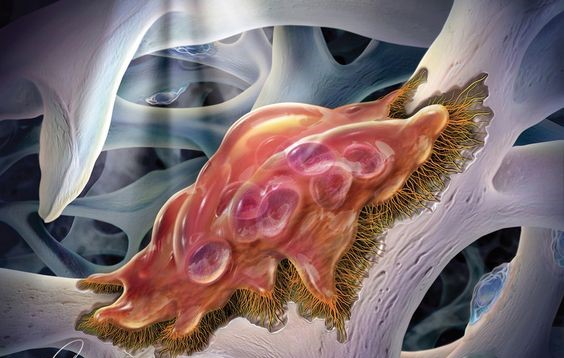Osteoclasts play a critical role in maintaining healthy bone structure by breaking down old or damaged bone tissue. But what is the life cycle of osteoclasts, and how long do they live? Understanding the lifespan of osteoclasts is essential for grasping their impact on bone health and their involvement in diseases like osteoporosis. In this article, we will explore how long osteoclasts live, the stages of their life cycle, and the factors influencing their longevity.
What are Osteoclasts
Osteoclasts are specialized cells responsible for bone resorption, a vital process in the constant cycle of bone remodeling. Unlike osteoblasts, which build bone, osteoclasts break down and absorb old bone tissue, ensuring that the skeleton remains healthy and dynamic. These large, multinucleated cells originate from hematopoietic stem cells, which also give rise to other blood cells like macrophages.
Osteoclasts’ activity is essential for maintaining the balance between bone formation and degradation. They attach to the bone surface, creating a sealed zone where they secrete acids and enzymes that dissolve bone minerals and collagen. Without osteoclasts, bone density would increase uncontrollably, leading to overly dense, brittle bones.

The Life Cycle of Osteoclasts
Osteoclasts, the specialized cells responsible for bone resorption, undergo a complex and dynamic life cycle. This process involves several stages, from their formation to their eventual demise. Understanding the life cycle of osteoclasts is essential for comprehending how bone tissue is constantly renewed and maintained.
Osteoclast Formation
The life cycle of osteoclasts begins with osteoclastogenesis, a process in which osteoclast precursor cells derived from the monocyte/macrophage lineage are activated. These precursor cells are stimulated by cytokines, particularly receptor activator of nuclear factor kappa-B ligand (RANKL) and macrophage colony-stimulating factor (M-CSF), which drive their differentiation into fully functional osteoclasts. Once mature, they are equipped to break down bone tissue.
Active Phase
Once formed, osteoclasts become highly active and attach to the bone matrix. They create a ruffled border at the attachment site, releasing acids and proteolytic enzymes that degrade bone material. During this phase, the cells continue to resorb bone until local signaling or regulatory factors terminate their activity.
Lifespan
So, how long do osteoclasts live? The lifespan of osteoclasts can vary, but they typically live for about two weeks. However, in some conditions, osteoclasts may survive for a few days or several weeks, depending on the environment in which they are functioning. Hormonal changes, mechanical stress, and other factors can either extend or shorten their lifespan.

Factors Affecting the Lifespan of Osteoclasts
Several factors can influence the lifespan of osteoclasts:
- Hormonal Influence: Hormones such as parathyroid hormone (PTH) and calcitonin can regulate osteoclast activity and lifespan. PTH stimulates osteoclast formation and activity, while calcitonin inhibits it.
- Cytokines and Local Factors: Cytokines, including receptor activator of nuclear factor-κB ligand (RANKL), play a crucial role in osteoclast development and survival. RANKL is produced by osteoblasts and stimulates osteoclast formation and activation.
- Aging and Disease: Aging and certain diseases, such as osteoporosis and arthritis, can affect osteoclast function and longevity. In osteoporosis, for example, there is an imbalance between bone resorption and bone formation, leading to decreased bone density.
Clinical Implications of Osteoclast Lifespan
Understanding the lifespan of osteoclasts has important clinical implications:
- The balance between osteoclast activity and osteoblast activity is essential for maintaining healthy bone tissue. Disruptions in this balance can lead to bone diseases such as osteoporosis and Paget’s disease.
- Changes in the life cycle of osteoclasts can contribute to various bone diseases. For example, excessive osteoclast activity can lead to osteoporosis, while decreased osteoclast activity can result in bone overgrowth, as seen in Paget’s disease.
- Targeting osteoclasts has been a focus of therapeutic research for bone diseases. Drugs such as bisphosphonates can inhibit osteoclast activity and reduce bone resorption, making them effective treatments for osteoporosis.

The life cycle of osteoclasts is a finely tuned process, critical for maintaining bone health. These cells typically live for about two weeks, but various factors such as hormones, cytokines, and diseases can influence their lifespan. Understanding how long osteoclasts live and the mechanisms regulating their life cycle provides essential insights into treating bone diseases like osteoporosis and other conditions where bone resorption is imbalanced.
